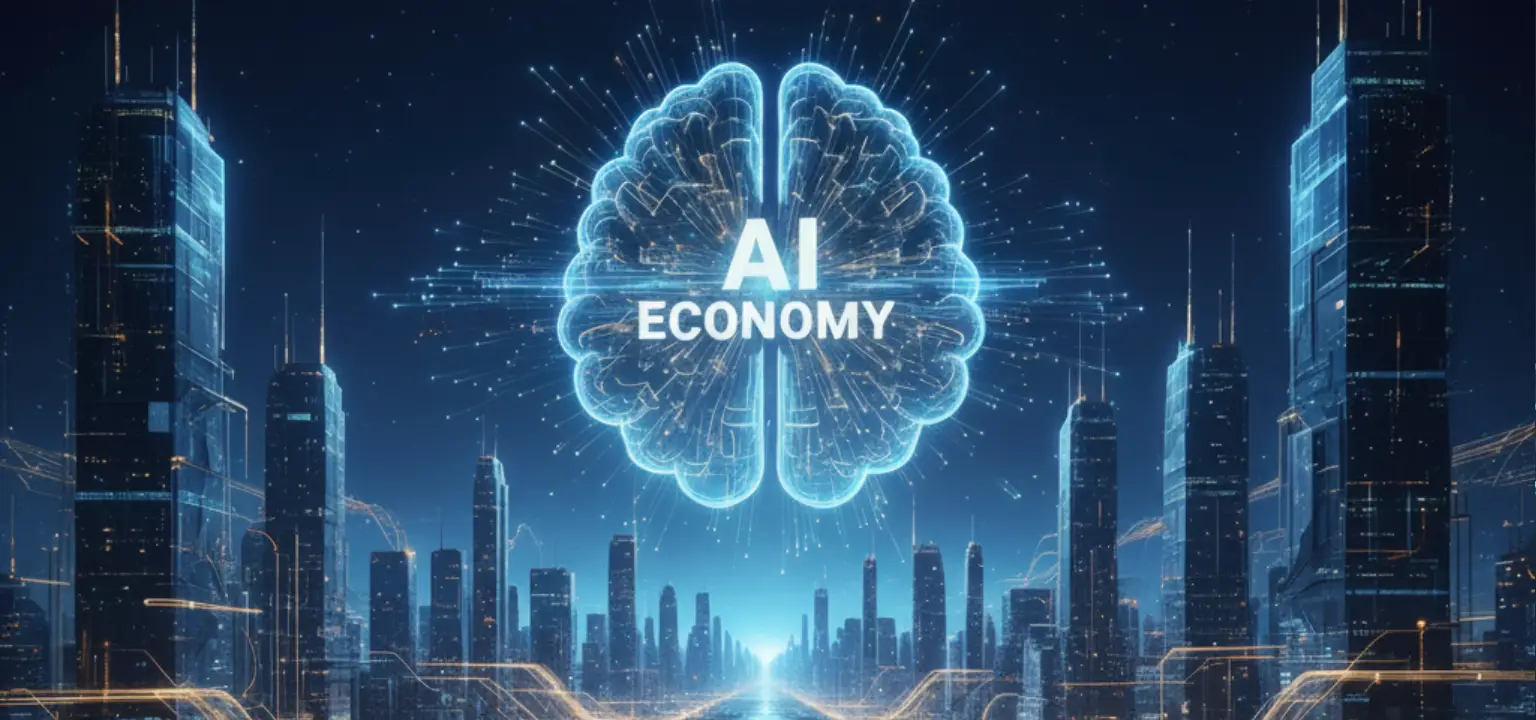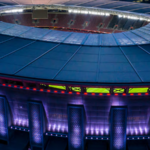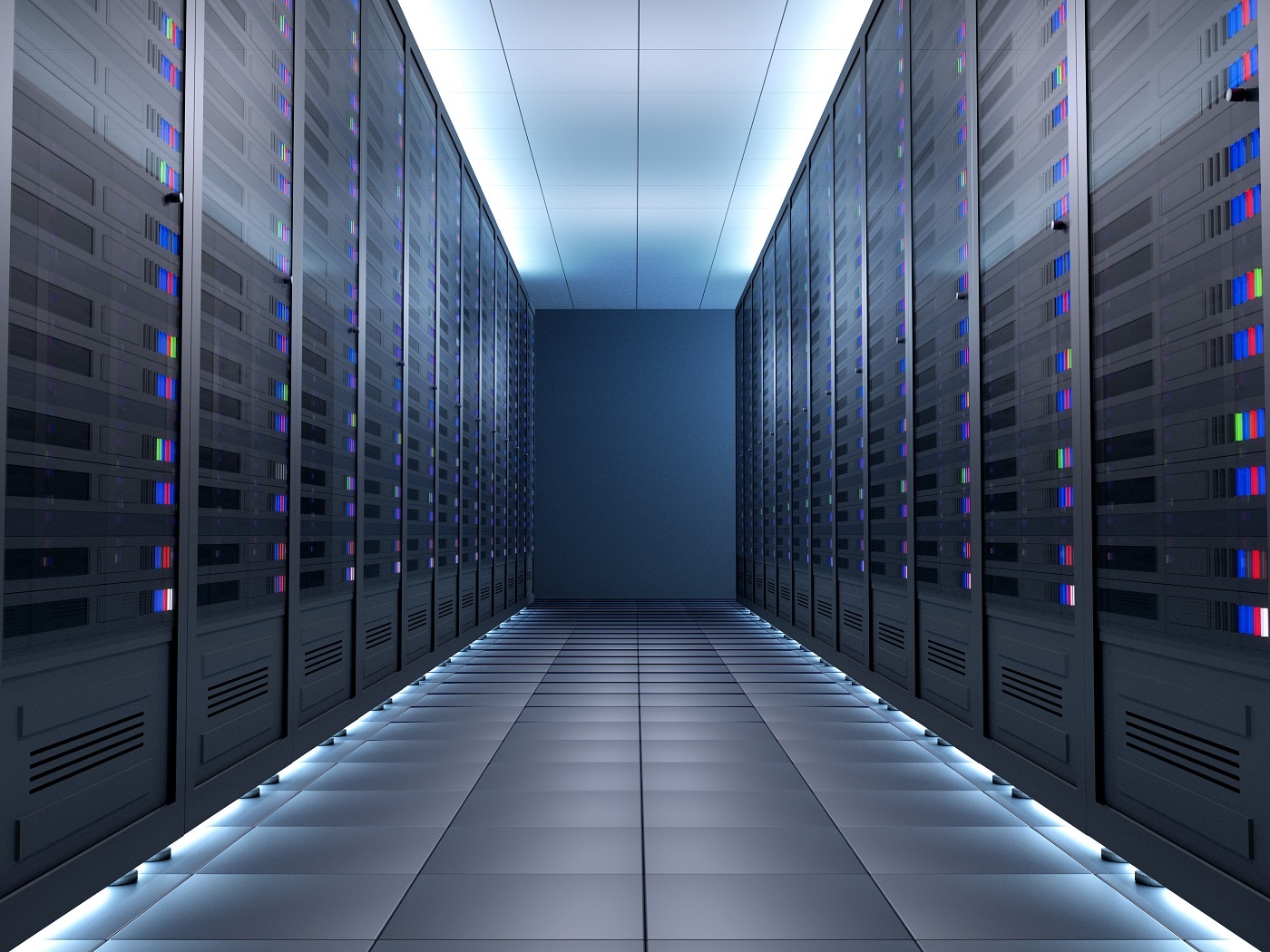Artificial intelligence (AI) has become the defining technology of our time, from large language models generating text to vision systems in autonomous vehicles, its role is increasingly expanding leading to more complex models and training compute outpacing Moore’s Law. Yet beneath the excitement lies a less visible enabler: the fiber optic networks that carry the enormous volumes of data fueling this revolution.
A simple way to picture AI’s physical architecture is to think of it as a living organism. The brain is the data center, where GPUs and processors perform the “thinking”. The circulatory system is the fiber optic network, moving data which is AI’s lifeblood at the speed of light between servers, clusters, and users and the senses are the edge devices and end-users. This system only functions if the circulation is fast and reliable: a powerful brain without blood flow is inert, and in the same way, advanced AI models are ineffective without dense, high-capacity fiber networks to sustain them. This surge is clearly visible in the share of total data center capacity devoted to advanced AI workloads and by 2030, AI-specific compute is expected to account for the majority of new capacity added, indicating a structural shift in data center resource allocation.
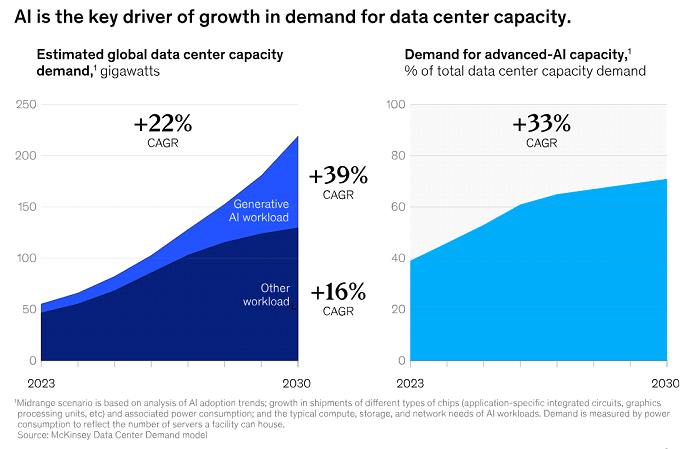
Figure 1 – Source:Mckinsey
For decades, copper cables have reliably carried the world’s data, supporting a wide range of applications. However, at higher speeds of 200–400 Gb/s their reach is limited to only a few meters. On the other hand Wireless technologies from 5G to satellites, promise flexibility and mobility, yet fall short of the low-latency, multi-gigabit-to-terabit performance that AI demands. Ultimately making fiber the most suitable choice for the ultra-high-speed, low-latency demands of AI workloads.
Contents
The AI Bandwidth Explosion
AI is also reshaping how data flows through networks. Unlike traditional web traffic, which primarily moves north–south between users and servers, AI workloads generate massive east–west traffic within data centers. Tightly coordinated GPU clusters exchange terabytes of data at 400–800 Gb/s per link, continuously processing and refining models in parallel. Deployments of the Celesta IBR Solution ensure these clusters remain fully synchronized, providing resilient, high-speed interconnects that prevent bottlenecks and sustain uninterrupted AI operations.
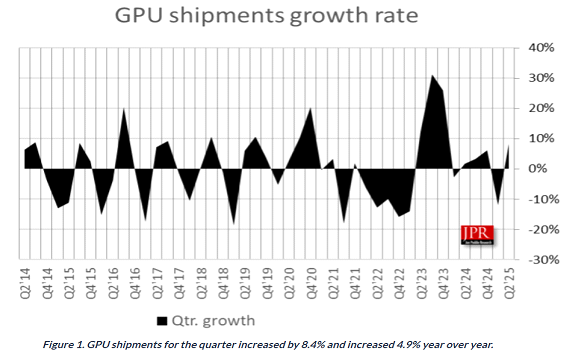
Figure 2. Source: https://www.jonpeddie.com/news/q225-pc-gpu-shipments-increased-by-8-4-from-last-quarter-suggesting-pre-tariff-panic-buying/
Meeting AI’s growing bandwidth demands requires massive investment in fiber infrastructure not only inside data centres but also between data centres. Modern data centers rely on thousands of fiber links to connect clusters and campuses. Zayo’s research found that by 2030, this could require over 100 million miles of long-haul fiber and tens of millions of miles of metro fiber[1]. STL’s 6912F cables – exemplify the backbone scalability needed to transport these ever-growing AI data volumes across continents, enabling the global expansion of compute-intensive applications.
Global data creation is expected to continue its rapid acceleration, potentially more than tripling from ~64 ZB in 2020 to well over 200 ZB in the coming decade[2]. Hyperscalers are responding with record investment: global data-center CAPEX surpassed $450 B in 2024 and is projected to exceed $1.2 T by 2029[3].
Each new generation of AI infrastructure, whether adding GPUs inside racks or synchronizing clusters across continents, is inseparable from proportional investment in optical capacity. Without continuous expansion of fiber, AI’s rapid growth would stall at the network layer. These trends signal more than just expansion, they reveal a structural transformation in network architecture. AI is driving an unprecedented bandwidth explosion, forcing architects and operators to rethink how data flows, how capacity is provisioned, and how the digital backbone of our world is built.
From Speed to Sustainability: The Next Phase of Fiber Innovation
To support this transformation, fiber has evolved from a traditional data transport medium into a foundational driver of AI infrastructure, carrying massive, low-latency data flows across every layer of the network –
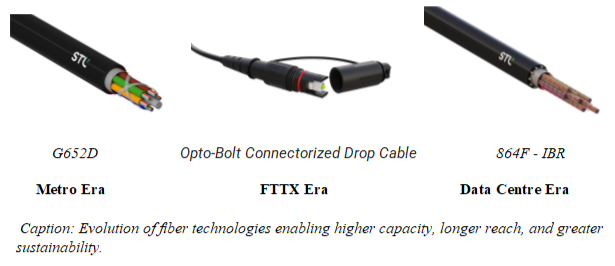
Higher Speeds: Capacity growth in optical networks has been relentless. Channel speeds have advanced from 10G to 100G, 400G, and now 800G in commercial deployment, with 1.6T trials already under way. Advances in optical modulation and signal processing now let a single fiber channel carry hundreds of gigabits per second — with experimental systems exceeding 400 terabits per second across one fiber. Beyond the familiar C+L bands, spectrum expansion into the S-band and other DWDM wavelengths is multiplying capacity without new trenching.
Lower Latency: For next-generation AI workloads, speed alone is not enough — latency is equally critical. Hollow-core fiber (HCF), which guides light through air instead of glass, cuts propagation delay and reduces end-to-end latency by ~30%. Recent advances have lowered its attenuation close to the best silica fibers, making it increasingly practical. Microsoft Azure has already begun piloting HCF, and its spotlight at OFC 2025 underscores its importance for distributed AI training and real-time inference[4].
Greater Scalability:To sustain exponential growth, infrastructure must scale without proportional increases in footprint. Multicore fiber (MCF) achieves this by embedding multiple cores within a single strand, multiplying throughput without expanding cable bulk. For hyperscale campuses where duct space is scarce and fiber density is highly valuable, this configuration is essential.
| Category | Fiber Type | Core Configuration | Core Diameter (μm) | Max Bandwidth / Data Rate | Max Transmission Distance | Attenuation (dB/km) |
| By Number of Modes | Single-Mode Fiber (SMF) | Single-Core | 8.3–9.0 | Up to 400 Gbps+ | 10 km to 100+ km | ~0.17 (OS2 typical) |
| Multimode Fiber (MMF) | Single-Core | 50 or 62.5 | 10 Gbps to 100 Gbps (OM3-OM5) | 100 m to 550 m | ~1.5–3.0 | |
| Specialty Fibers | Multi-Core Fiber (MCF) | Multi-Core | Multiple cores | Very high aggregate | Varies (both short and long distances) | Comparable to SMF |
| Hollow-Core Fiber (HCF) | Single-Core (air-filled) | Air core (~20-40) | Experimental, Tbps+ | 100+ km (short mostly) | <0.1 |
(All numbers as per standard / published STL spec)
Caption: Figure 5. Comparative performance of emerging fiber types for AI-scale workloads.
Source :Fiber Optics 4 Sale and FOA Reference for Fiber Optics.
Better Energy Efficiency: As capacity and scale grow, energy becomes the ultimate constraint. Inside hyperscale facilities, traditional electrical interconnects have become the bottleneck. Co-packaged optics (CPO) places optical engines beside the switch or accelerator, shrinking electrical reaches and driver losses. Today, pluggables typically consume ~15–20 pJ/bit, while CPO implementations are in the ~5–7 pJ/bit range, with credible roadmaps to <1 pJ/bit.[5] These designs lay the foundation for sustainable growth in the AI-driven data economy, ensuring that energy efficiency scales alongside compute and bandwidth.
The Fiber Imperative
We’ve reached a tipping point. Compute and models are scaling at an unprecedented rate, but they will grind to a halt if networks don’t match them. This is no longer a matter of optimization, it is a matter of continuity. The world is learning what we in this industry have always known: fiber is as fundamental to progress as power or processors. The future of AI will not be written in code alone — it will be written in light, carried by fiber.
References –
- https://www.businesswire.com/news/home/20250624662736/en/Exploding-Data-Consumption-Signals-New-Era-for-Fiber-Infrastructure-Zayo-Report-Finds
- https://www.statista.com/statistics/871513/worldwide-data-created/
- https://www.rcrwireless.com/20250807/ai-infrastructure/dc-delloro
- https://spectrum.ieee.org/hollow-core-fiber
- https://semiengineering.com/co-packaged-optics-reaches-power-efficiency-tipping-point/

Vijay Agashe – Head Strategy and Chief of Staff to MD

Jimi Barker – Chief Business Officer – Hyperscale Data Centres

